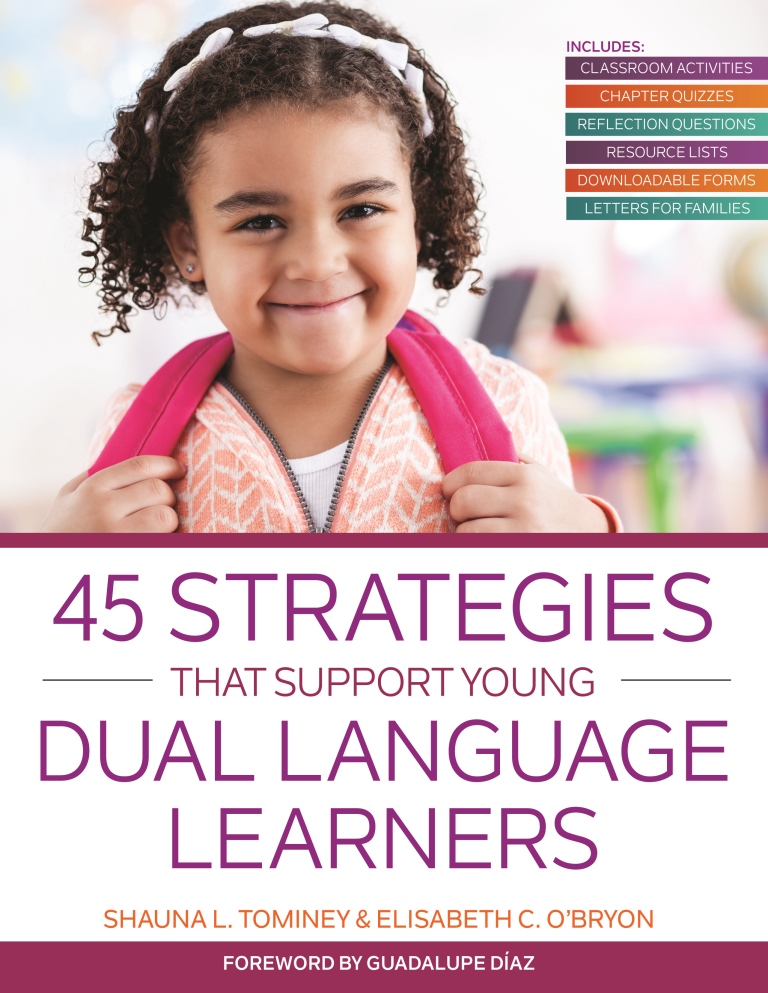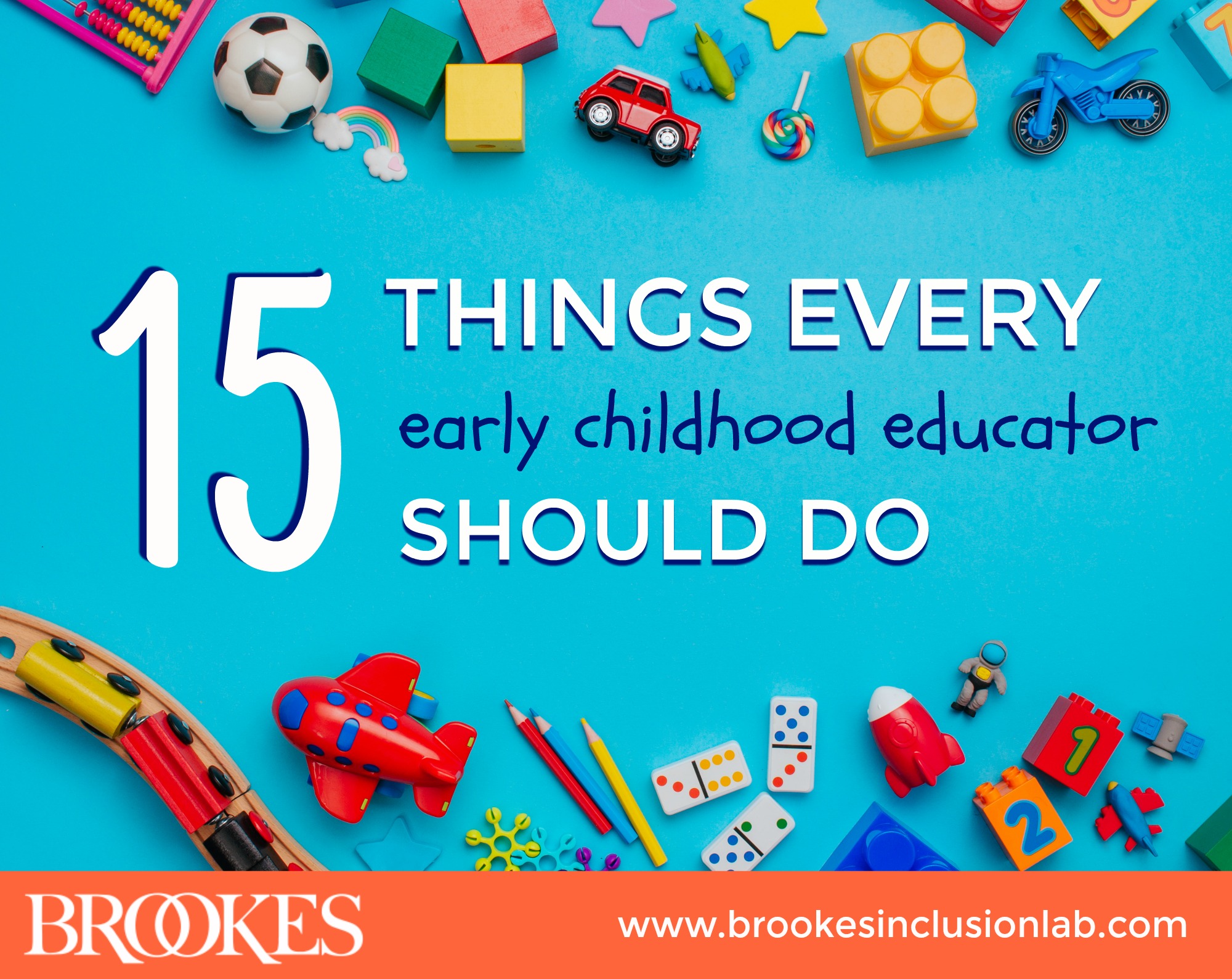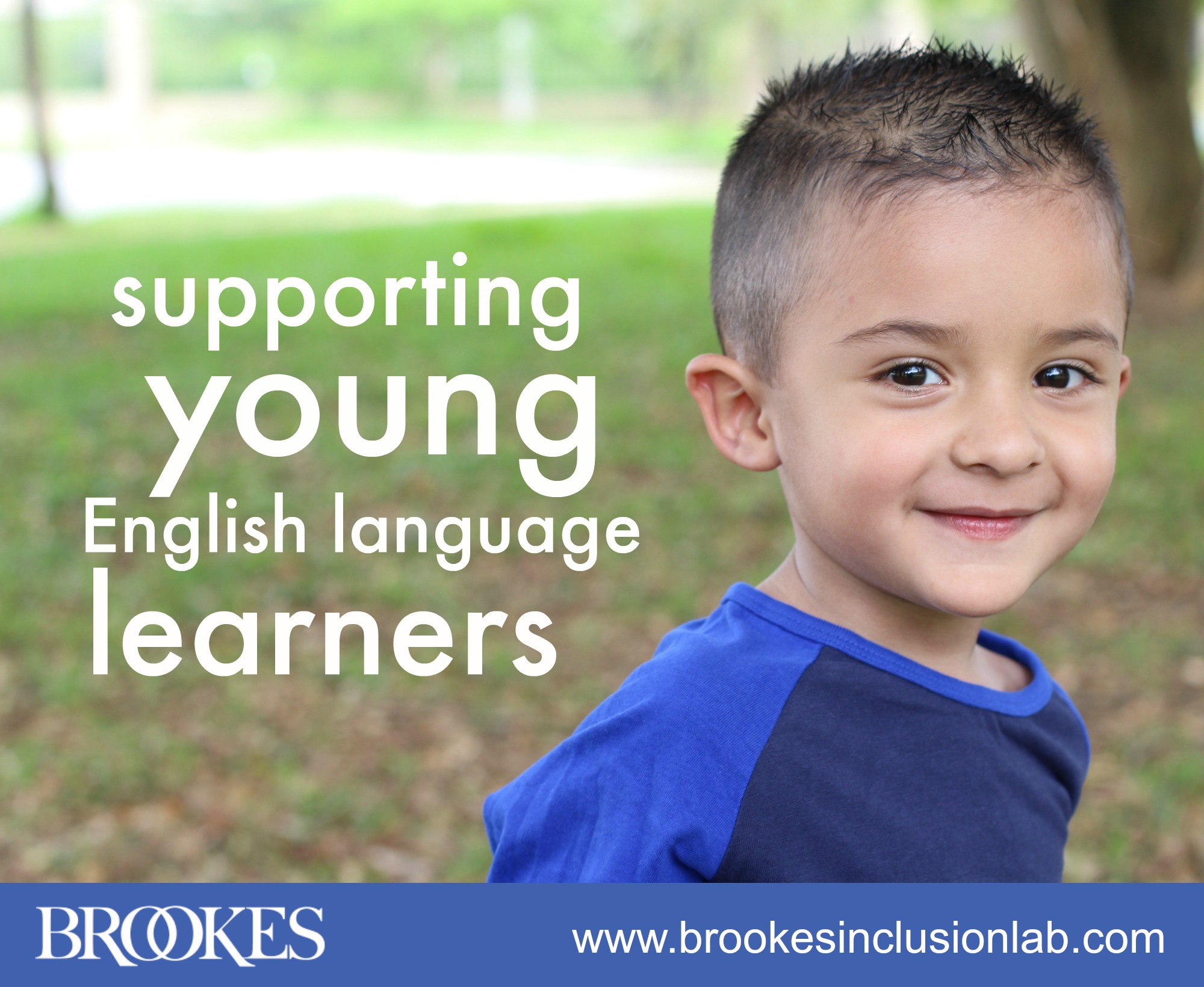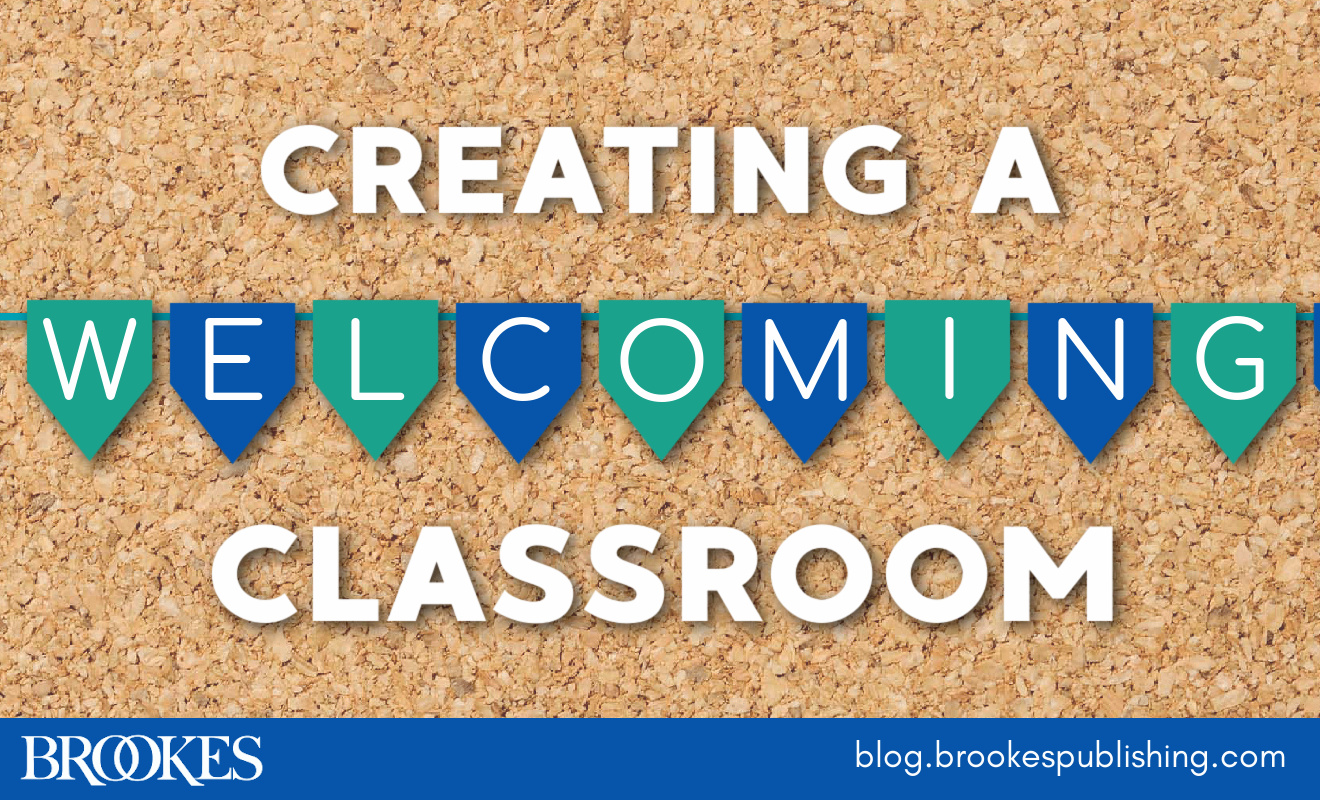 How can you create a welcoming, nurturing learning environment for all young children—and ensure that the dual language learners in your classroom or program feel a sense of safety and belonging? That’s the question we’ll address in today’s blog post, excerpted and adapted from the book 45 Strategies That Support Young Dual Language Learners, by Shauna L. Tominey & Elisabeth C. O’Bryon. Use these practical ideas to help the diverse children and families you work with feel welcome inside and outside of the classroom. (Have a tip of your own to share? Add it in the comments below!)
How can you create a welcoming, nurturing learning environment for all young children—and ensure that the dual language learners in your classroom or program feel a sense of safety and belonging? That’s the question we’ll address in today’s blog post, excerpted and adapted from the book 45 Strategies That Support Young Dual Language Learners, by Shauna L. Tominey & Elisabeth C. O’Bryon. Use these practical ideas to help the diverse children and families you work with feel welcome inside and outside of the classroom. (Have a tip of your own to share? Add it in the comments below!)
Create a welcome collage, poster, or display. Make a collage of words—reflecting the languages spoken in your school—with the heading “How we want your child to feel at school.” In addition to the word welcome, include feeling words in many languages: happy, excited, peaceful, safe, and curious. You can even create a space where families can add words in English and their home language that represent how they would like their children to feel at school. This is a simple way to put families at ease, engage parents, and show them that how they would like their child to feel at school matters to you. It’s a good idea to have one display near the entrance of your classroom and another at the entrance of your program or center. (You might also consider having program staff available to greet parents at the school door during the first week to welcome them and help guide them to their child’s classroom.)
Create a space where families can add words in English and their home language that represent how they would like their children to feel at school.
Set up a community bulletin board for families. Designate this as a spot where multicultural events and resources can be displayed and shared. Point the board out to families and invite them to contribute to it if they have resources or upcoming community events to share. Keep the board current by removing signs for events that have passed and updating the items regularly.
Establish a peaceful tone through music. Build and maintain a multicultural music library that you can use throughout the day in the classroom. During key times such as arrival and drop-off periods, play inviting and soothing music that represents a wide range of languages and cultures. You can ask parents to share their own albums or playlists with the class or recommend music that is special or meaningful to their family.
Display multicultural images and books. Seeing familiar faces, places, and cultures reflected in your classroom literature and art displays may help reassure children and families that their home language and culture is valued in your classroom. Make the books available for parents to read with children when they visit the classroom, and let them know that they can borrow the books to read at home. Diverse books and display materials will also play an important role in the lives of children from the dominant culture, who will benefit from learning about people and things that are new and different from what they know.
Seeing familiar faces, places, and cultures reflected in your classroom literature and art displays may help reassure children and families that their home language and culture is valued in your classroom.
Label objects around the classroom in English, Spanish, and other languages represented in your classroom, and include a picture of the item so it’s clear what object is connected to the word. Put the labels on the different classroom areas (your block area, the bathroom) and commonly used objects (chairs, doors), and use the labels throughout the day as a reminder to incorporate words in other languages. The labels will support children’s vocabulary development, aid in classroom management, and help all young learners begin to associate print language with spoken language. Labeling objects also engages families in the learning process by acknowledging the importance of their home language in school. (You may even find that it helps families learn new words in English.)
Create a visual classroom schedule. Label your schedule with each of the key activities that you have planned for the class each day—for example, Morning Meeting, Free Play, and Snack. Include key words in English and Spanish or other languages represented in your classroom and pair these words with pictures on the schedule. Display the visual schedule in a place where children can see it, you can refer to it throughout the day, and families can see it during drop-off or pick-up. You might want to consider creating a child-friendly version of the schedule that you can print and share with children to color or draw on during an extension activity. Encourage children to take it home, and ask them to identify someone they will share the schedule with.
Establish a quiet space in your classroom. All young children can benefit from a space where they can calm down when experiencing intense emotions, have quiet time when they’re feeling overwhelmed, or seek out one-on-one time with an adult or classmate. Create a quiet corner, “calm corner,” or “cozy corner” where individual children or small groups of children can take a break if needed. Fill your quiet corner with soft items, such as pillows or stuffed animals, and post images of faces depicting different feelings to support conversations about emotions. You might use an existing built-in alcove if you have one in your classroom, or you can rearrange your classroom furniture or bookshelves to create a nook. If that’s not an option, try using a large refrigerator- or oven-sized cardboard box placed on one side of the room or in one corner of the room to serve as your quiet space. Having a retreat within your classroom will help every child feel safe and secure.
Having a retreat within your classroom will help every child feel safe and secure.
Remember that diversity doesn’t only refer to differences in culture and language. Diversity also includes differences in age, gender, abilities/disabilities, learning approaches, family forms, and more. As you work to establish a welcoming classroom environment, make sure that your approach fully embraces the many different forms diversity may take. (To evaluate your current school climate, download this free checklist from the Welcoming Schools website.)
By making these and other strategies a part of your teaching approach, you’ll support the language development and social success of dual language learners (as well as their peers). If you liked the suggestions in today’s blog post, be sure to explore the book!

45 Strategies That Support Young Dual Language Learners
This timely book is a toolbox of today’s best strategies for supporting children and families from diverse backgrounds and ensuring the academic and social success of young dual language learners. Early childhood educators will get an invaluable collection of 45 practical, developmentally appropriate strategies for teaching dual language learners (both Spanish speakers and children who speak other languages). Real-world guidance helps teachers apply each strategy in their own classrooms, and the activities, reflection questions, and resources in Spanish will support educators in strengthening their current teaching practices.
Stay up to date on the latest posts, news, strategies, and more!
Sign up for one of our FREE newslettersMore posts like this

NEW FREE RESOURCE: Cultural Diversity Toolkit for Early Childhood Educators
October 13, 2020
15 Things Every Early Childhood Educator Should Do
August 18, 2020


Write a Comment
Your email address will not be published. Required fields are marked *
Post a Comment